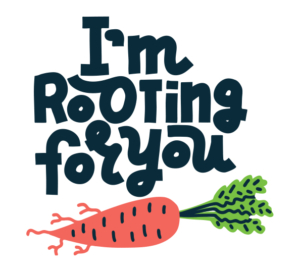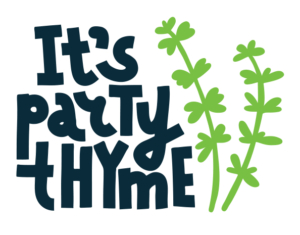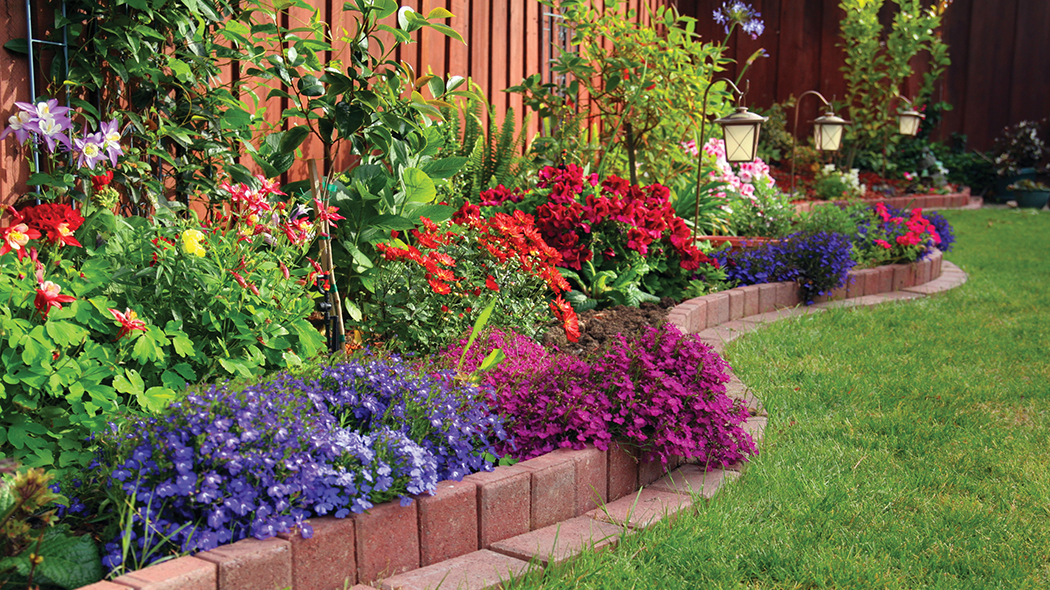Last April, as the COVID crud was completely crimping everyday lifestyles, I read an article in the Wall Street Journal expounding the therapeutic vibes of starting a vegetable garden. But I wasn’t too surprised in September when the WSJ ran another story about many homebound, newbie gardeners throwing in the trowel because results fell far short of their springtime hopes.
I suspect much of this disappointment came from backyard growers creating large gardens with little experience to maintain them through the long growing season. And then there were those who wanted to try their hand at growing edibles but didn’t have much room, so they just didn’t try.
Well, would anyone like to give ’er another rip or start a veggie garden for the first time this spring? I’ll let you in on a secret: Size matters — starting small is an easier path to success.
Allow me to share a few words of semi-wisdom for those of you who have little gardening experience or limited growing space.
Going to Pot
Even though I have over two acres of land at Casa Jackson to grow edibles, I’ve become a bit of a “pot head” because I like the portability. As long as I keep planters relatively small — 2- to 5-gallon containers is a good range in sizes — I can move heat-seeking edibles like peppers, chives, basil, mint and thyme into the sun when shade invades their growing space during the day. I can also slip such cool-season crops as lettuce, spinach and radishes to shadier spots during the heat of the afternoon to extend their harvest nearly into the early summer.

Buy ornate or colorful planters for visual aesthetics, if it fits your fancy, but old buckets, small office trash cans, wooden crates — anything that can hold dirt through at least one growing season will do. Just drill or cut plenty of holes in the bottoms for drainage.
TIP: Use quality commercial potting soil for growing plants in containers. Cheap bags of common garden dirt will usually result in a mucky, unproductive mess.
TIP: Want an even bigger potted garden? Although they won’t be very portable when full of dirt, small, plastic kiddie pools (with a heap of holes in the bottom) make great contained mini-gardens.
Bedtime Story
Typical gardens for edibles are arranged in rows, which, while looking orderly with lines reminiscent of a West Point parade, waste space that could be used for more plants. To maximize garden areas — no matter how limited — create beds instead. This simple step turns many walking paths between rows into usable growing ground.

What makes a garden bed work more efficiently is the trick of only using spacing recommendations per plant and forgetting about suggested distances between rows. This scrunches plants closer together, but not enough to create competition for ground nutrients and lower production potential.
Traditional colonial rectangles probably come to mind when garden beds for vegetables or herbs are mentioned, but, hey, this is the 21st century, and anything goes. This means 90-degree angles can be replaced by imaginative curves, swerves, bends or bows to fit better into a landscape layout, if necessary.
TIP: Create beds as long as Texas, if you want, but for easy access, don’t make them over four feet wide. This user-friendly width will ease your reach into beds, preventing foot traffic from compacting the soil as well as minimizing embarrassing face-plants in the dirt.
Small World
The physics of spatial constraints dictate that the size of many popular vegetable plants will easily overwhelm any planter or limited-space garden. However, vegetable plant breeders, aware of this problem, have been busy developing smaller versions of standard plants that still have plenty of spunk to crank out decent crops.

Probably the best example of a little plant yielding big results is the tomato. There are many Munchkin ’maters tagged with the operative adjective “Patio” that are long on production but short in stature. “Early Wonder,” “Tiny Tim,” “Red Rocket” and “New Big Dwarf ” are some of the more popular cultivars. Keep in mind that most patio tomatoes are determinate, meaning they will produce all their crop over a stretch of a few weeks, rather than through the entire growing season. Some small okra selections also deliver big. Productive cultivars like “Baby Bubba,” “Jambalaya” and “Lee” that reach around half the height of standard okra varieties are perfect petite plants for large containers or little gardens.
TIP: Even compact versions of typically rangy, viny veggies such as green beans, cucumbers, pumpkins, watermelons, squash and cantaloupes can be easily found. Look for the word “Bush” in cultivar descriptions.
Hang ‘Em High
Another way to maximize production in small spaces is to grow up. In other words, don’t let such standard-sized vine plants as cucumbers, watermelons, pumpkins and squash sprawl across the garden. Instead, cage or trellis them, so the vines will grow up, not out. Have a fence? You also have a perfect support for vining veggies.

While training cucumbers and squash vines up supports is nothing new, suspending large watermelons and pumpkins does seem problematic. However, there are watermelon cultivars — often called “icebox” varieties — such as “Sweet Beauty’ and “Sugar Baby” that produce mini-melons only averaging about eight pounds apiece. Pumpkins can also be found in petite forms (around seven pounds each) with selections like “Sugar Pie”, “Spookie” and “Jack O’ Lantern”.
Although they are smaller, miniature pumpkins and watermelons will still put strain on their vines if they are trained up a support. This problem can be solved by hanging cloth or nylon slings off the supports and cradling the yummies-to-be as they mature.
TIP: Don’t be surprised if your vines in the sky look particularly healthy. Lifting these plants off the ground will increase air circulation through the foliage, which reduces problems with soil-borne diseases and viruses.
Break Out
Who says vegetables and herbs have to be restricted to a culinary garden? One of my well-worn mantras is that many growable edibles are very pretty plants. To save space, why not break out of this classic confine, and start showing them off in flower beds and perennial borders?

If you want colorful competition for zinnias, coleuses, petunias, lantanas and such, try okra (especially the handsome cultivar “Red Burgundy”), crimson-tinted loose-leaf lettuce (“Red Sails” or “Lollo Rossa”, for example), Swiss chard (in particular, flashy selections such as “Bright Lights” and “Ruby”) or any of the many dazzling hot peppers.
Herbs can also step up when you need more eye-catching plants in ornamental beds. Bronze fennel with its delicate, feathery, smoky foliage; the dramatic dark leaves of purple basil; creeping thyme’s low, colorful fl ow; the visual sass of “Tricolor” sage; the impressive spiky presence of rosemary — these are just a few of the pretty herbal helpers for gardeners to play with in limited landscapes.
TIP: Be safe when mixing edibles with ornamentals. If you use pesticides in flower beds, make sure they are cleared for use on vegetables and herbs too.
- Outdoor Adventures
- Outdoor Adventures: Play
- Outdoor Adventures: Paddle
- Outdoor Adventures: Hike
- Outdoor Adventures: Bike
- Classic Cars Restored for Charity
- Restaurant Spotlight: The Blind Pelican
- Fuel Up at Local Bakeries
- Octo Pils Pilsner from Vicious Fishes Brewery
- Grow & Bloom: Big Little Gardens
- There & Back: Pinehurst
- Bark in the Park
- Meet & Greet: Danielle Castelli Strader
- The 2020-2021 School Year: A Recap







